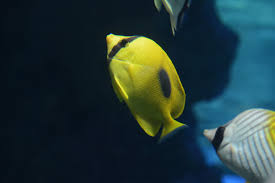The dragon (龙, lóng) has been an iconic figure in Chinese mythology, culture, and history for thousands of years. As a symbol of power, wisdom, protection, and divine authority, the dragon has inspired countless artistic expressions, including traditional paintings, literature, and modern visual media.

In Chinese comics (manhua, 漫画) and cinema, dragons continue to play a central role, appearing as majestic guardians, legendary beasts, or supernatural beings. These depictions reflect both ancient traditions and modern reinterpretations, evolving alongside China’s growing entertainment industry. This article explores how dragons are portrayed in Chinese comics and films, their symbolic meanings, and their influence on pop culture.
1. The Symbolism of Dragons in Chinese Culture
Before diving into Chinese comics and cinema, it’s essential to understand the cultural significance of dragons in China:
- Symbol of Power and Authority – Dragons were associated with emperors, representing their divine right to rule.
- Guardian of Nature – In mythology, dragons control rain, rivers, seas, and the weather, ensuring balance in the natural world.
- Wisdom and Longevity – Unlike the Western dragon, which is often a villain, the Chinese dragon is a benevolent, wise creature that brings good fortune.
- Transformation and Rebirth – Many legends depict dragons as shape-shifters or spiritual beings that undergo metamorphosis.
These meanings have deeply influenced how dragons are portrayed in modern Chinese storytelling, especially in comics and cinema.
2. The Image of Dragons in Chinese Comics (Manhua, 漫画)
2.1. Traditional Depictions in Early Manhua
Chinese comics, or manhua, emerged in the early 20th century, blending traditional ink painting with Western comic influences. In these early works, dragons were:
- Heavily inspired by classical Chinese paintings, featuring long, serpentine bodies, flowing whiskers, and cloud-like motifs.
- Often shown as wise, divine creatures that interact with emperors, monks, or legendary heroes.
- Used to reinforce historical and cultural values, appearing in stories about dynastic China, folklore, and Confucian teachings.
2.2. Modern Manhua and Fantasy Adventures
With the rise of digital manhua and China’s booming online platforms, dragons have taken on new roles in fantasy, action, and martial arts stories:
(1) Martial Arts and Cultivation Manhua
- Popular in Xianxia (仙侠, immortal hero) and Wuxia (武侠, martial hero) genres.
- Dragons represent powerful spiritual beings, ancient mentors, or mystical sources of energy.
- Examples:
- Tales of Demons and Gods (妖神记) – Features dragon spirits as power sources for martial cultivators.
- Star Martial God Technique (星武神诀) – Showcases dragons as celestial guardians guiding warriors.
(2) Science Fiction and Cyberpunk Dragons
- Some modern manhua reimagine dragons in futuristic, sci-fi settings, blending mythology with technology.
- Example:
- Dragon Raja (龙族) – A mix of mythology and cybernetic enhancements, featuring genetically engineered dragons in a dystopian world.
(3) Comedy and Satirical Manhua
- Some lighthearted comics depict dragons in humorous, everyday situations.
- Example:
- My Dragon Girlfriend (我的龙女友) – A romantic comedy where a dragon transforms into a human girl.
Manhua has allowed Chinese dragons to be explored in diverse genres, from epic battles to slice-of-life storytelling, keeping the mythical creature relevant in modern pop culture.
3. Dragons in Chinese Cinema
Chinese films and animated movies have also brought dragons to life, with representations ranging from traditional mythological beings to modern fantasy creatures.
3.1. Dragons in Classic Chinese Films
Traditional films often depict dragons as:
- Mystical creatures that assist heroes (e.g., in folklore adaptations).
- Emblems of the emperor (e.g., historical dramas).
- Guardians of sacred treasures (e.g., adventure films).
(1) The Emperor and the White Snake (2011)
- Based on the legend of Madame White Snake, the film features a dragon-like deity as a powerful force of nature.
(2) The Sorcerer and the White Snake (2011)
- A fantasy romance where dragons appear as celestial beings controlling natural forces.
3.2. Animated Films Featuring Dragons
In recent years, Chinese animated films (donghua, 动画) have used dragons as both protagonists and antagonists, often blending traditional myths with modern animation techniques.
(1) White Snake (2019) and Green Snake (2021)
- A visually stunning adaptation of the White Snake legend, where dragon-like creatures appear as magical beings and demon lords.
(2) Ne Zha (2019)
- Features the Dragon King (龙王, Lóng Wáng) as one of the main antagonists, protecting the Dragon Clan’s honor.
(3) Jiang Ziya (2020)
- A retelling of a classic Chinese mythological tale, showcasing dragons as celestial forces with immense power.
3.3. The Evolution of Dragons in Live-Action Fantasy Films
In modern Chinese fantasy blockbusters, dragons have become larger-than-life CGI creatures, rivaling Hollywood’s portrayal of mythical beasts.
(1) The Great Wall (2016)
- Features dragon-like creatures as monstrous invaders, blending fantasy with historical war drama.
(2) Creation of the Gods I: Kingdom of Storms (2023)
- Reinterprets classic mythological dragons into an action-packed visual spectacle.
These films reflect China’s advancements in CGI technology, allowing dragons to be more realistic, detailed, and immersive in modern storytelling.
4. The Global Influence of Chinese Dragons in Comics and Cinema
4.1. Influence on Western Media
- Hollywood films like Kung Fu Panda and Mulan have borrowed Chinese dragon designs.
- Western comics and anime have adapted the Chinese dragon’s benevolent traits, making them wise mentors instead of just villains.
4.2. The Future of Chinese Dragons in Entertainment
- More international collaborations – Chinese animation studios are working with global partners to bring dragon mythology to a wider audience.
- Increasing diversity in storytelling – Manhua and films are experimenting with dragons in cyberpunk, sci-fi, and horror genres.
Conclusion
Dragons in Chinese comics and cinema are a fusion of ancient traditions and modern creativity. Whether depicted as wise mentors in martial arts stories, powerful creatures in fantasy films, or humorous characters in digital manhua, the Chinese dragon remains a dynamic and evolving figure in entertainment.
As China’s film and comic industries continue to expand, the dragon will undoubtedly continue to inspire new generations of artists, filmmakers, and audiences worldwide.

Leave a Reply